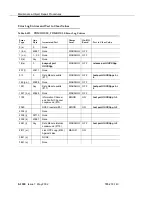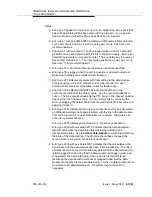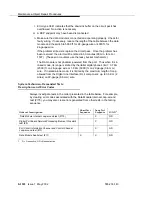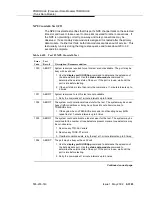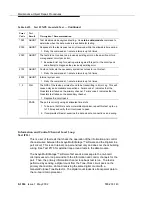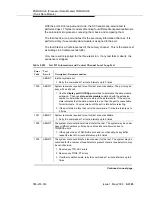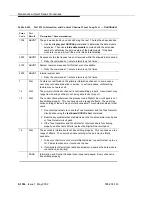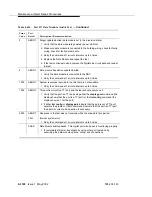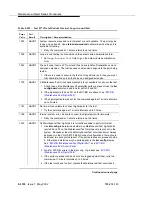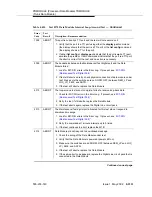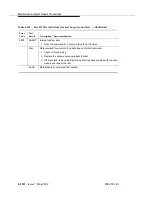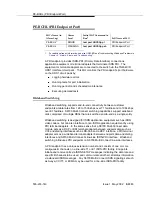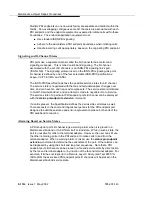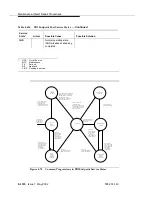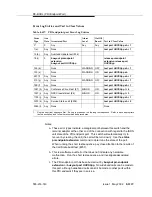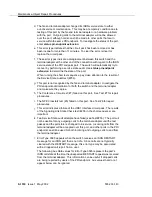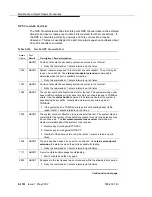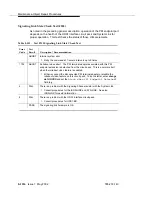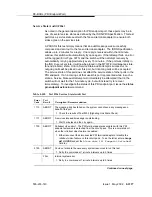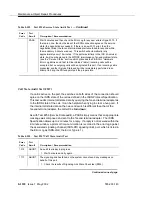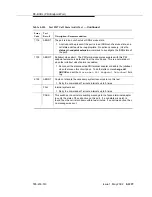
Maintenance-Object Repair Procedures
555-233-143
8-1214
Issue 1 May 2002
Multiple PRI endpoints on one line-side facility are separate and distinct within the
facility. Non-overlapping contiguous sets of B channels are associated with each
PRI endpoint, and the endpoint equipment is expected to initiate calls within these
boundaries. The endpoint application equipment must:
■
Use standard ISDN-PRI signaling
■
Adhere to the administered PRI endpoint boundaries when initiating calls
■
Handle incoming calls appropriately, based on the originating PRI endpoint
Signaling and B-Channel States
PRI ports use a separate channel called the D channel for call-control and
signaling messages. This is called out-of-band signaling. The D channel
associated with the set of B channels is an ISDN-PRI signaling link’s port
(ISDN-LNK). The signaling protocol used on the ISDN-PRI signaling-link port’s
D channel is defined by one of the four selectable ISDN-PRI Specifications:
Avaya, CCITT, ECMA, and ANSI.
The ISDN-PRI Specification defines the possible service states for a B channel.
The service state is negotiated with the far-end terminal adapter, changes over
time, and can have far- and near-end components. The service state is initialized
to Out-Of-Service/Far-End, and an attempt is made to negotiate it to In-Service.
The service state of a particular PRI endpoint port’s B channel can be displayed
with the status pri-endpoint extension command.
If a call is present, the Specification defines the permissible call states as well.
There are tests in the short and long test sequences for the PRI endpoint port
designed to audit these states and ensure agreement between both ends of the
PRI wideband connection.
Alarming Based on Service States
A PRI endpoint port’s B channel logs a warning alarm when it is placed in a
Maintenance/Far-End or Out-Of-Service/Far-End state. While in such a state, the
port is unusable for calls to the terminal adapter. However, the user can still use
the other remaining ports in the PRI endpoint to make calls to and from the
terminal adapter. When a warning alarm is raised, use the status pri-endpoint
extension command to determine the exact state of the port. Other alarms can
be diagnosed by using the short and long test sequences. Note that a PRI
endpoint port’s B channel can be placed in a far-end service state by direct action
by the far-end terminal adapter or by inaction of the far-end terminal adapter. For
example, if it does not respond to a Remote Layer 3 Query (see Test #260 for
ISDN-LNK) the associated PRI endpoint port’s B channels will be placed in the
Maintenance/Far-End service state.
Summary of Contents for S8700 Series
Page 50: ...Maintenance Architecture 555 233 143 1 26 Issue 1 May 2002 ...
Page 74: ...Initialization and Recovery 555 233 143 3 12 Issue 1 May 2002 ...
Page 186: ...Alarms Errors and Troubleshooting 555 233 143 4 112 Issue 1 May 2002 ...
Page 232: ...Additional Maintenance Procedures 555 233 143 5 46 Issue 1 May 2002 ...
Page 635: ...status psa Issue 1 May 2002 7 379 555 233 143 status psa See status tti on page 7 406 ...
Page 722: ...Maintenance Commands 555 233 143 7 466 Issue 1 May 2002 ...

